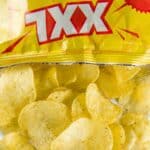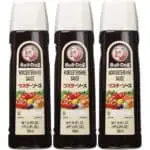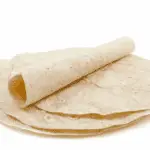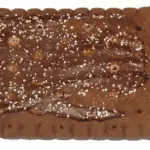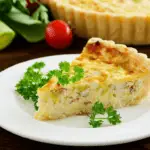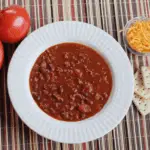Churros are a popular fried dough pastry that can be found in many countries, but most notably in Spain and Mexico. But where exactly did these crunchy, cinnamon-sugar coated treats originate?
Are churros Mexican? While churros are popular in Mexico, their origins are actually Spanish. The churro is thought to have been brought to Mexico by Spanish conquistadors. Since then, they have been widely adopted into Mexican cuisine, with local variations and dips such as chocolate or dulce de leche.
To find out, we have to go back several centuries to trace the roots of the churro.

What are the Origins of Churros in Spain?
Churros have a long history tied to Spain. Food historians believe churros were likely brought to Spain by Portuguese sailors in the 16th century. At the time, Portugal had trading routes with China, and it is thought that Portuguese sailors were inspired by Chinese youtiao, which are fried dough sticks often eaten for breakfast.
The sailors then brought this concept back to Europe, where it took hold in Spain. The churro was perfected in Spanish cuisine, incorporating local ingredients like flour and olive oil. Spanish shepherds particularly enjoyed churros because the fried dough was easy to make over a campfire.
Churros became especially popular in Spain during the mid-1800s. This is when Spanish entrepreneurs began selling churros with thick drinking chocolate as an affordable breakfast item. The churro-chocolate combination was perfect for dipping, and it fueled workers who needed hearty breakfasts before long days of labor.
So while the early origins of churros can be traced to China, churros became forever linked to Spanish cuisine and culture beginning in the 16th century.
How Did Churros Spread from Spain to Mexico?
Churros made their way from Spain to Mexico starting in the 1520s as Spanish explorers arrived in what is now Mexico. Hernán Cortés and his men brought cattle, wheat, and their favorite foods like churros. At the time, the Aztec people already had a version of fried dough, but it was the Spanish-style churro that really caught on.
When the Spanish conquistadors settled in Mexico, they opened restaurants, cafés, and bakeries that served familiar Spanish fare including churros. Mexico City in particular became known for its churro stands. The sweet, fried dough was a favorite treat for people attending bullfights at the Plaza de Toros or visiting churches during holiday celebrations.
Over generations, churros were readily adopted into Mexican cuisine and culture. They were customized with local ingredients like cinnamon and piloncillo sugar. Street vendors continued selling piping hot churros throughout Mexico as the perfect morning meal or a sweet snack. The churro became so ingrained in Mexican food culture that it is now considered a traditional Mexican food despite its Spanish roots.
How Are Churros Made?
While churros may seem decadent, they are made from just a few simple ingredients. The basic churro recipe consists of flour, water, oil, and flavorings. Here is an overview of how churros go from a doughy batter to a fried, cinnamon-coated delight:
What Are the Basic Ingredients for Churros?
- Flour – Wheat flour gives churros their distinctive texture and allows them to crisp up when fried. Most recipes call for all-purpose flour, but some Spanish churro recipes use a portion of corn flour as well.
- Water – Water hydrates the flour to create the churro dough. Some recipes may use milk or beer instead for added flavor.
- Oil – Churros are fried in oil at high heat. Oils with high smoke points like canola or peanut work best. In Spain, olive oil is commonly used.
- Eggs – Eggs help bind the dough so it holds its shape when piped and fried.
- Salt – Just a pinch of salt enhances overall flavor.
- Sugar – White or brown sugar is used for coating. Cinnamon combines with the sugar in the classic churro taste.
What is the Process for Making Churros?
Making churros involves a few key steps:
- Mix the dough. Flour, water, oil, eggs, and salt are combined into a thick batter. Resting the dough allows the flour to fully hydrate.
- Pipe the dough. The dough is put into a churrera, or piping bag with a star-shaped nozzle. It is squeezed into strips and cut into lengths.
- Fry the churros. The piped dough strips are fried in hot oil until crispy on the outside. This takes just 1-2 minutes per batch.
- Toss in cinnamon sugar. Once drained from the oil, the warm churros are rolled in a mixture of cinnamon and sugar.
- Enjoy! The churros are best served hot and fresh. Authentic churros have a perfectly crispy outside and soft, doughy interior.
What Are the Different Types of Churros?
While the original churro is a simple fried dough stick, over the years many variations have developed across Spain, Mexico, and beyond. Some add new flavors, while others change up the shape.
What Are Some Common Variations of Plain Churros?
- Plain or simple churros – These are the basic churros, fried and coated in sugar. They are sometimes called Spanish-style churros.
- Mexican-style churros – In Mexico, churros are often flavored with cinnamon and piloncillo sugar instead of plain white sugar. Piloncillo has a rich, molasses-like flavor.
- Thick churros – Some churros are made extra thick, almost like donut sticks. Thick churros allow more time for the interior to cook through while the exterior gets crispy.
- Churros sencillos – “Simple churros” are uncoated. They have a milder flavor that highlights the fried dough itself.
What Are Some Popular Filled or Coated Churros?
- Chocolate-filled churros – These churros have a center filled with warm melted chocolate, dark chocolate, or chocolate hazelnut.
- Dulce de leche-filled churros – Dulce de leche, or milk caramel, is a sweet and creamy filling for churros.
- Bavarian cream-filled churros – Churros can also be filled with vanilla Bavarian cream.
- Coconut-coated churros – For tropical flair, churros are tossed in sweet shredded coconut instead of cinnamon sugar.
- Chocolate-coated churros – Hot churros get dipped in warm chocolate sauce for extra indulgence.
How Are Churros Typically Served?
Churros are served in different ways depending on the region, restaurant, or occasion. But no matter how they are served, churros are best enjoyed fresh and warm.
How are Churros Served Plain or with Toppings?
- Plain – The most common way to enjoy churros is on their own, freshly fried and coated in cinnamon sugar.
- With dipping chocolate – Many restaurants serve chocolate sauce alongside churros for dipping. Thick hot chocolate is paired with churros in Spain.
- With ice cream – In Mexico, churros are often served on top of ice cream for a fun twist. Vanilla or cajeta (caramel) ice cream complement them well.
- With caramel sauce – For added indulgence, warm caramel sauce can be drizzled over churros. Dulce de leche is a popular choice.
- With whipped cream – Freshly whipped cream lightens up churros for a fluffier dessert.
Where Can You Find Churros at Festivals and Fairs?
Churros are a staple treat at festivals and fairs in regions where they are popular:
- Spain – At festivals across Spain like Las Fallas in Valencia or La Tomatina in Buñol, you will find churros being sold alongside porras (similar Spanish pastries).
- Mexico – In Mexico, churros are sold by street vendors at local fairs and during events like Dia de Los Muertos and Quinceañera celebrations.
- Latin America – In countries like Argentina, Colombia, and Venezuela, churros are served at carnivals and outdoor markets from churros carts.
- United States – Amusement parks like Disneyland and state fairs in the U.S. often have churro carts or stands among other fair treats.
- Philippines – Churros are commonly served at festivals in the Philippines like the MassKara Festival.
What Are Some Cultural Significances of Churros?
Beyond just being a tasty fried snack, churros hold significance in Spanish and Mexican culture. The pastry has become firmly rooted in traditions over the centuries.
What Role Have Churros Played in Spanish Culture?
- Breakfast tradition – Having churros with thick hot chocolate is a beloved breakfast tradition in Spain that dates back over 150 years.
- Festival food – Churros are sold from vendors at nearly every festival in Spain. Eating churros is part of the celebration.
- Family recipe heritage – Cooking churros according to treasured recipes has been passed down between generations of families in Spain.
- Regional pride – Different regions of Spain have their unique churros recipes. Churros reflect regional identities.
- Cafés and chocolaterías – Historic cafés and chocolaterías specialize in perfect pairings of churros with gourmet chocolate.
How Did Churros Become Important in Mexican Culture?
- Street food – Churros sold by street vendors for breakfast are a staple of daily life in Mexico.
- Feria fare – No feria (fair) in Mexico would be complete without the aroma of fresh churros wafting through the air.
- Holiday treat – Churros are an integral treat during holidays like Christmas, Dia de Los Muertos, and Easter.
- Versatility – Mexicans have embraced the many varieties of churros, from plain to filled to topped.
- Family bonding – Making and eating churros is a fun family activity in Mexican homes. Children love the sweet sticks.
In summary, while churros originated in Spain, they became a fundamental part of Mexican cuisine and culture over time. The pastry is now one of the most iconic Mexican street foods. Though churros have spread to many parts of the world, they retain a special place in Spanish and Mexican food traditions.

